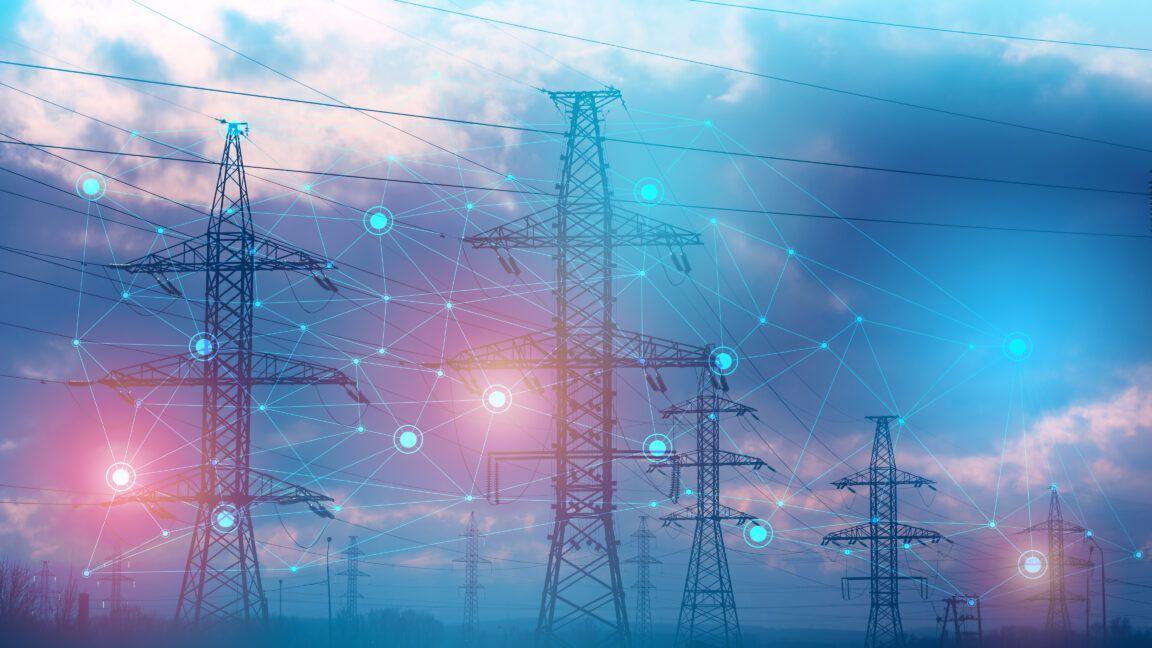Physicists Explore Ways to Enhance Particle Accelerator Efficiency
2 Sources
2 Sources
[1]
How can physicists make particle accelerators more efficient?
As particle accelerator technology moves into the high-luminosity era, the need for extreme precision and unprecedented collision energy keeps growing. Given also the Laboratory's desire to reduce energy consumption and costs, the design and operation of CERN's accelerators must constantly be refined in order to be as efficient as possible. To address this, the Efficient Particle Accelerators project (EPA) has been established - a team of people from different accelerator, equipment and control groups across CERN who are working together to improve accelerator efficiency. A think-tank was set up following a 2022 workshop to plan upgrades for the High Luminosity LHC (HL-LHC), and it came up with seven recommendations on efficiency for the EPA to work on. "The idea was to look at efficiency in the broadest terms," says Alex Huschauer, engineer-in-charge of the CERN PS and member of the EPA. "We wanted a framework that could be applied to each machine in the accelerator complex." To do this, the team created nine work packages on efficiency to be deployed over the years leading up to the beginning of the HL-LHC run. "It emerged from our discussions in the efficiency think-tank that automation is the way forward," says the EPA project leader, Verena Kain. "This means using automation both in the conventional way and using AI and machine learning." For example, AI can help physicists combat accelerator magnet hysteresis. This happens when the field of the iron-dominated accelerator magnets cannot be described by a simple mapping of current in the electromagnet to the field. If this is not taken into account, it can lead to inconsistent programmed fields and detrimental effects on beam quality, such as reducing the stability and precision of the beam's trajectory. Today, these field errors are manually tuned to correct the field, a process that takes both time and energy. "Hysteresis happens because the actual magnetic field is not defined just by the current in the power supply, but also by the magnet's history," says Kain.* "What's difficult is that we can't model it analytically - we can't work out exactly what current is needed to create the correct field for the beam in the accelerator magnet - at least not with the precision required. But AI can learn from the magnet's historical data and elaborate a precise model." The team have done initial tests using magnets in the SPS and hope to train the AI on all CERN's accelerating magnets over the coming years. While the experiments across the CERN accelerator complex already use automation, AI and machine learning to assist with data-taking, up until now, much of the beam and accelerator control has been done manually. "Most of the lower energy machines, like the PS, were built in an era when automation as we know it today was simply not possible." Kain continues. Another area where automation can revolutionise efficiency is in scheduling. "The different beams in the accelerator complex are produced one after the other and this has to be orchestrated so that the beam can be extracted from one machine and injected into the next at the right moment," she says. "Sometimes we have to change the schedule between 20 to 40 times a day, and it can take around 5 minutes each time. That task, currently done manually, accounts for much of the work of people in the control centre." By automating this process, control centre operators will be able to spend more time working on the beams than on scheduling. Other areas of focus for the EPA are automated LHC filling, autopilots, automatic fault recovery and prevention, automatic testing and sequencing, automatic parameter control and optimisation. The team hopes to continue their research over the next five years, using LHC Run 3 and Long Shutdown 3 to conduct tests. "Thanks to the EPA project, for the first time we will be using AI and automation for the accelerators on a large scale," continues Huschauer. "If we can produce beams with better quality, we will be able to run the complex for less time, creating better physics data and reducing overall energy consumption."
[2]
How can physicists make particle accelerators more efficient?
As particle accelerator technology moves into the high-luminosity era, the need for extreme precision and unprecedented collision energy keeps growing. Given also the Laboratory's desire to reduce energy consumption and costs, the design and operation of CERN's accelerators must constantly be refined in order to be as efficient as possible. To address this, the Efficient Particle Accelerators project (EPA) has been established - a team of people from different accelerator, equipment and control groups across CERN who are working together to improve accelerator efficiency. A think-tank was set up following a 2022 workshop to plan upgrades for the High Luminosity LHC (HL-LHC), and it came up with seven recommendations on efficiency for the EPA to work on. "The idea was to look at efficiency in the broadest terms," says Alex Huschauer, engineer-in-charge of the CERN PS and member of the EPA. "We wanted a framework that could be applied to each machine in the accelerator complex." To do this, the team created nine work packages on efficiency to be deployed over the years leading up to the beginning of the HL-LHC run. "It emerged from our discussions in the efficiency think-tank that automation is the way forward," says the EPA project leader, Verena Kain. "This means using automation both in the conventional way and using AI and machine learning." For example, AI can help physicists combat accelerator magnet hysteresis. This happens when the field of the iron-dominated accelerator magnets cannot be described by a simple mapping of current in the electromagnet to the field. If this is not taken into account, it can lead to inconsistent programmed fields and detrimental effects on beam quality, such as reducing the stability and precision of the beam's trajectory. Today, these field errors are manually tuned to correct the field, a process that takes both time and energy. "Hysteresis happens because the actual magnetic field is not defined just by the current in the power supply, but also by the magnet's history," says Kain.* "What's difficult is that we can't model it analytically - we can't work out exactly what current is needed to create the correct field for the beam in the accelerator magnet - at least not with the precision required. But AI can learn from the magnet's historical data and elaborate a precise model." The team have done initial tests using magnets in the SPS and hope to train the AI on all CERN's accelerating magnets over the coming years. While the experiments across the CERN accelerator complex already use automation, AI and machine learning to assist with data-taking, up until now, much of the beam and accelerator control has been done manually. "Most of the lower energy machines, like the PS, were built in an era when automation as we know it today was simply not possible." Kain continues. Another area where automation can revolutionise efficiency is in scheduling. "The different beams in the accelerator complex are produced one after the other and this has to be orchestrated so that the beam can be extracted from one machine and injected into the next at the right moment," she says. "Sometimes we have to change the schedule between 20 to 40 times a day, and it can take around 5 minutes each time. That task, currently done manually, accounts for much of the work of people in the control centre." By automating this process, control centre operators will be able to spend more time working on the beams than on scheduling. Other areas of focus for the EPA are automated LHC filling, autopilots, automatic fault recovery and prevention, automatic testing and sequencing, automatic parameter control and optimisation. The team hopes to continue their research over the next five years, using LHC Run 3 and Long Shutdown 3 to conduct tests. "Thanks to the EPA project, for the first time we will be using AI and automation for the accelerators on a large scale," continues Huschauer. "If we can produce beams with better quality, we will be able to run the complex for less time, creating better physics data and reducing overall energy consumption."
Share
Share
Copy Link
CERN researchers are investigating innovative methods to improve the energy efficiency of particle accelerators. Their efforts focus on optimizing beam dynamics and developing advanced technologies for more sustainable scientific research.
The Quest for Energy-Efficient Particle Accelerators
Particle accelerators, crucial tools in modern physics research, are known for their substantial energy consumption. Scientists at CERN, the European Organization for Nuclear Research, are now spearheading efforts to make these machines more energy-efficient without compromising their performance
1
.Understanding the Energy Challenge
Particle accelerators, such as the Large Hadron Collider (LHC) at CERN, require significant amounts of energy to operate. The LHC alone consumes about 1.3 terawatt hours of electricity annually, equivalent to the power usage of 300,000 European homes
1
. This high energy demand has prompted researchers to explore ways to reduce consumption while maintaining scientific output.Innovative Approaches to Efficiency
CERN scientists are investigating several strategies to enhance accelerator efficiency:
-
Optimizing Beam Dynamics: Researchers are focusing on improving the quality and stability of particle beams. By refining beam dynamics, they aim to reduce energy losses and increase overall efficiency
2
. -
Advanced Magnet Technologies: The development of more efficient superconducting magnets is a key area of research. These magnets could potentially operate at higher fields with less energy input
1
. -
Energy Recovery Systems: Scientists are exploring ways to capture and reuse the energy from particle beams after they've served their purpose, rather than letting it dissipate as heat
2
.
The Role of Machine Learning
Artificial intelligence and machine learning are playing an increasingly important role in accelerator optimization. These technologies are being employed to analyze vast amounts of operational data, helping to identify patterns and opportunities for efficiency improvements
1
.Balancing Efficiency and Performance
While striving for energy efficiency, researchers must ensure that these improvements don't come at the cost of scientific capabilities. The challenge lies in maintaining or even enhancing the performance of accelerators while reducing their energy footprint
2
.Related Stories
Broader Implications
The pursuit of more efficient accelerators extends beyond CERN. The technologies and methodologies developed here could have wide-ranging applications in other scientific facilities and industries that use particle accelerators, such as medical treatment centers and material science laboratories
1
.Future Prospects
As CERN prepares for the High-Luminosity LHC upgrade and looks ahead to future accelerators, energy efficiency remains a top priority. The ongoing research not only aims to reduce the environmental impact of these machines but also to ensure the sustainability of high-energy physics research in the long term
2
.References
Summarized by
Navi
Related Stories
Recent Highlights
1
Google launches Gemini 3 Flash as default AI model, delivering speed with Pro-grade reasoning
Technology

2
OpenAI launches GPT Image 1.5 as AI image generator war with Google intensifies
Technology

3
OpenAI launches ChatGPT app store, opening doors for third-party developers to build AI-powered apps
Technology








